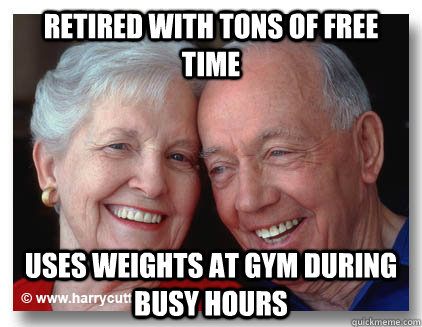“Earth's crammed with heaven...
But only he who sees, takes off his shoes.”
― Elizabeth Barrett Browning, Aurora Leigh
But only he who sees, takes off his shoes.”
― Elizabeth Barrett Browning, Aurora Leigh
Resistance Exercise & Seniors
As we age there are changes in our brains and total nervous system. More specifically, one of the basic components of our nerves are neurons. As muscles atrophy with age, as in sarcopenia, neurons lose size, their myelination and their ability to regenerate. Throughout the body these changes can lead to incoordination, accidents, falls, and trauma.
In the August 2014, vol 28-Issue 8., The Journal of Strength & Conditioning Research had an article entitled Resistance Exercise May Improve Spatial Awareness and Visual Reaction in Older Adults. The authors were trying to determine if strength training had any effect on cognitive and physical impairments. Aerobic exercise has exhibited positive effects on both cognitive and physical impairment on older adults. Presently there are few pharmacological treatments available. Aerobic exercise has been of value in improving the cognition and reaction of older people, but to determine the results from resistance training was the purpose of this study.
Twenty five healthy adults 60 years or older were volunteers and were free of recent surgeries, heart disease, pulmonary problems, and metabolic symptoms. There were no musculoskeletal injuries so, essentially, they were in reasonably good health for their age group. They were divided into two groups, a control group of 12 individuals and a training group of 13 people.
Thee training programs completed 2 days of training to become familiarized with the exercises they were taught. They had 2 resistance training sessions for a period of 6 weeks with at least 48 hours of rest between all training sessions to allow for recovery. Full body workouts were performed during each session with 7 or 8 exercises performed each day. The workouts were for 3 sets of each exercise and the number of repetitions were between 8 to 15. All sessions were monitored by a certified strength and conditioning specialist. The program followed the recommended guidelines for older adults by the American College of Sports Medicine and the national Strength and Conditioning Association.
The exercises performed by the training group include:
Results and Interpretations of the analyses revealed that resistance exercise training was "likely beneficial" for improving spatial awareness and visual and physical reaction times. The improvement of the training group over the control group for each of the senses are as follows:

Twenty five healthy adults 60 years or older were volunteers and were free of recent surgeries, heart disease, pulmonary problems, and metabolic symptoms. There were no musculoskeletal injuries so, essentially, they were in reasonably good health for their age group. They were divided into two groups, a control group of 12 individuals and a training group of 13 people.
Thee training programs completed 2 days of training to become familiarized with the exercises they were taught. They had 2 resistance training sessions for a period of 6 weeks with at least 48 hours of rest between all training sessions to allow for recovery. Full body workouts were performed during each session with 7 or 8 exercises performed each day. The workouts were for 3 sets of each exercise and the number of repetitions were between 8 to 15. All sessions were monitored by a certified strength and conditioning specialist. The program followed the recommended guidelines for older adults by the American College of Sports Medicine and the national Strength and Conditioning Association.
The exercises performed by the training group include:
- Leg extensions
- Leg curls
- Seated rows
- Lat pull-downs
- Modified squats
- Modified split squats
- Modified stiff-legged dead lifts
- Biceps curls
- Chest presses
- Shoulder presses
- Tricep extensions
- Abdominals
- Calf raises
Results and Interpretations of the analyses revealed that resistance exercise training was "likely beneficial" for improving spatial awareness and visual and physical reaction times. The improvement of the training group over the control group for each of the senses are as follows:
- Spatial awareness; +40%
- Visual reaction times; +14.6%
- Physical reaction times; +14%

No comments:
Post a Comment